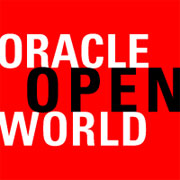
Like any major trade show, OpenWorld has been in planning for a long time. However, this OpenWorld might be the most planned show of its kind ever, because in addition to the extravaganza taking place in the Moscone Center, many of the hotels in the area and even in closed-off streets, an important sideshow and object lesson — America’s Cup — is taking place in San Francisco Bay.

You might wonder about the connection between the America’s Cup races and OpenWorld. Everyone knows that Oracle is a sponsor of the American Boat and that CEO Larry Ellison has poured significant personal wealth into the cup over many years. The reason the cup is being contested right now is due to the fact that Ellison’s boat won it last time, and the defender has its choice of when and where for the defense. So what does this have to do with CRM? Keep reading.
The races, which have been going on all summer if you include all of the qualifying heats, have not all gone Oracle’s way. If you’ve been following events, Oracle started the finals against the New Zealand entry with a penalty of two races. As always, the Kiwis have a well sailed and skippered ship, and as of a few days ago, it only needed one more win to take the cup home. Now comes CRM.
Big Data at Work
At OpenWorld, many of the breakout sessions start with a short video of CEO Ellison looking right into the camera and intoning, “They don’t call this the PC Age,” along with several other tropes and then, “They call it the Information Age.”
Oracle is making the most of this conference to cement its place as a cloud computing leader, not only in applications but also in the hardware and infrastructure software that make the cloud run. So it has introduced some big and very powerful machines and software to run them — putting the whole database in memory and running it from there without the latency you get every time you run to a disk to get more data.
Ellison’s keynote introduced the newest version of the database, 12c, which is the in-memory version, plus a new device prosaically called the “M6-32” to run it even faster.
All the details will take some time to leach out of this meeting, but in-memory is supposed to improve database performance by a factor of 100 times for some operations, and even greater performance has been achieved over the last few years as Oracle’s Sun Microsystems division has repeatedly introduced machines that follow the same script.
Now back to the races. We all know this is not simply the Information Age, but the age of Big Data — and that information is only acquired by crunching it. The Oracle boat is bristling with sensors, as have been most America’s Cup entries for decades. But no team has ever been able to crunch data and model boat performance quite the way this year’s contenders have.
Team USA had been trailing the Kiwis for the whole series, having started with that two-race penalty, but then a funny thing happened. Over the weekend, the American boat started winning consistently. Indeed, it had to, because another Kiwi win would have ended the competition. It was almost as if the boat had a motor bolted to its stern.
A better explanation, though, is simply that after the first four races the team had enough data to model its boat’s performance, and through the power of analysis, the crew has been able to figure out how to sail the thing a bit better. In a comeback that will make the history books, the American team is now died with the New Zealand team, and just one more race will decide the victor. The American boat is sailing different and better — and obviously faster, thanks to whatever machinations it’s been able to figure out. To say that its strategy has been working is a giant understatement.
When Change Is Good
If the Americans pull a rabbit out of the hat, it will be a stunning demonstration of good sailing — but also of the power of analytics paired with Big Data. Even if they fall short in the end, the impressive role reversal on display over the past few days will still be enough to fuel endless discussions and possibly end the debate, once and for all, of the importance a disciplined approach to data and information — and modeling — will play henceforth in business and, yes, CRM.
As I wrote earlier, this show has been in the works for a long time. In some respects, you could say since the beginning of the Information Age. It is rare that you can put your finger on a moment in time when everything changed — and the moments when the change is actually good are even more rare. Yet here one is playing out in San Francisco on land and even on sea.
























































